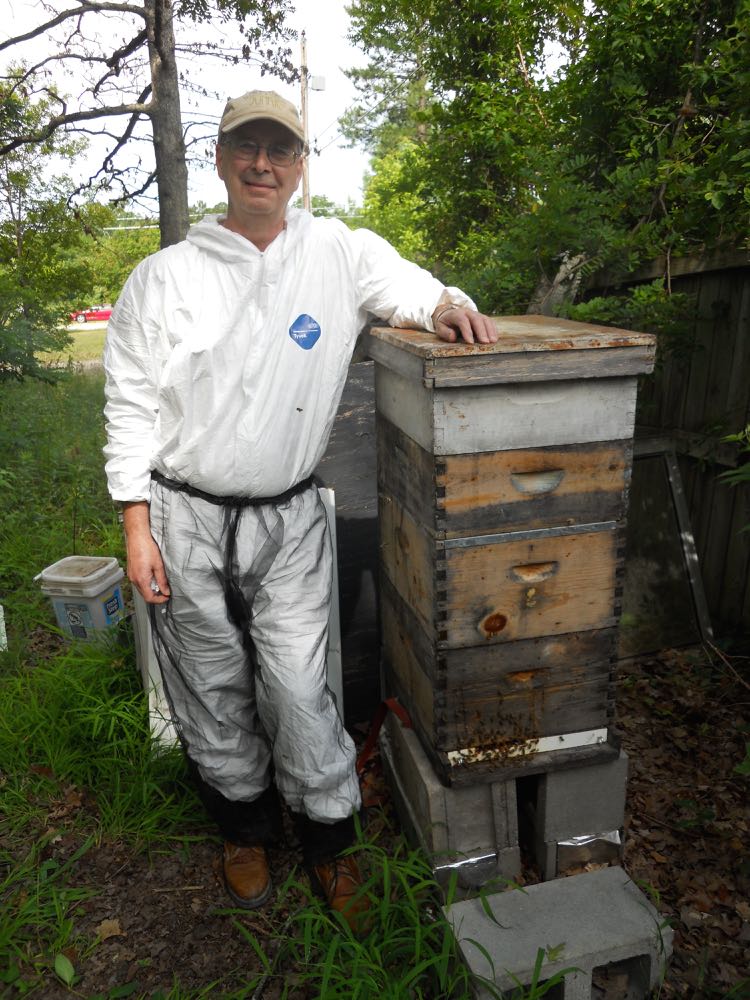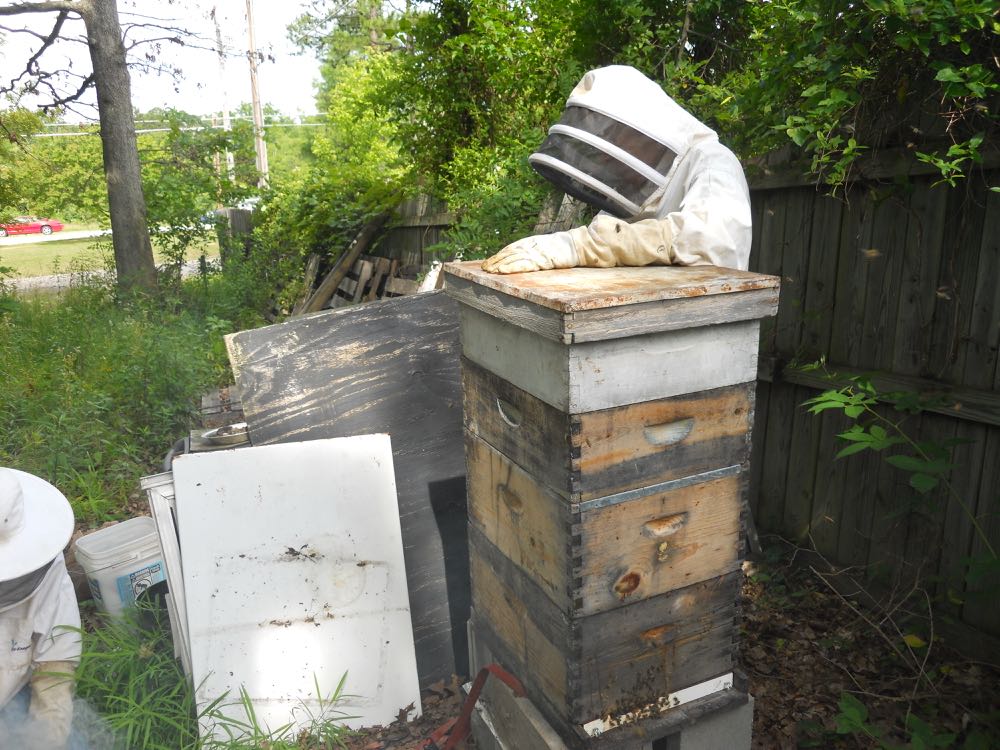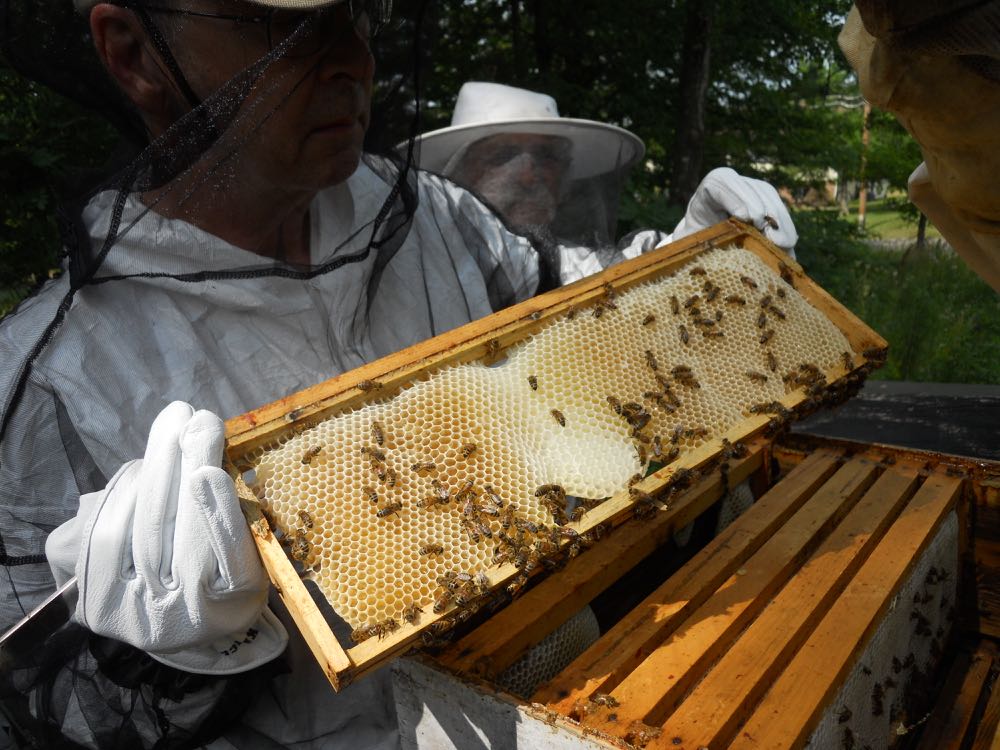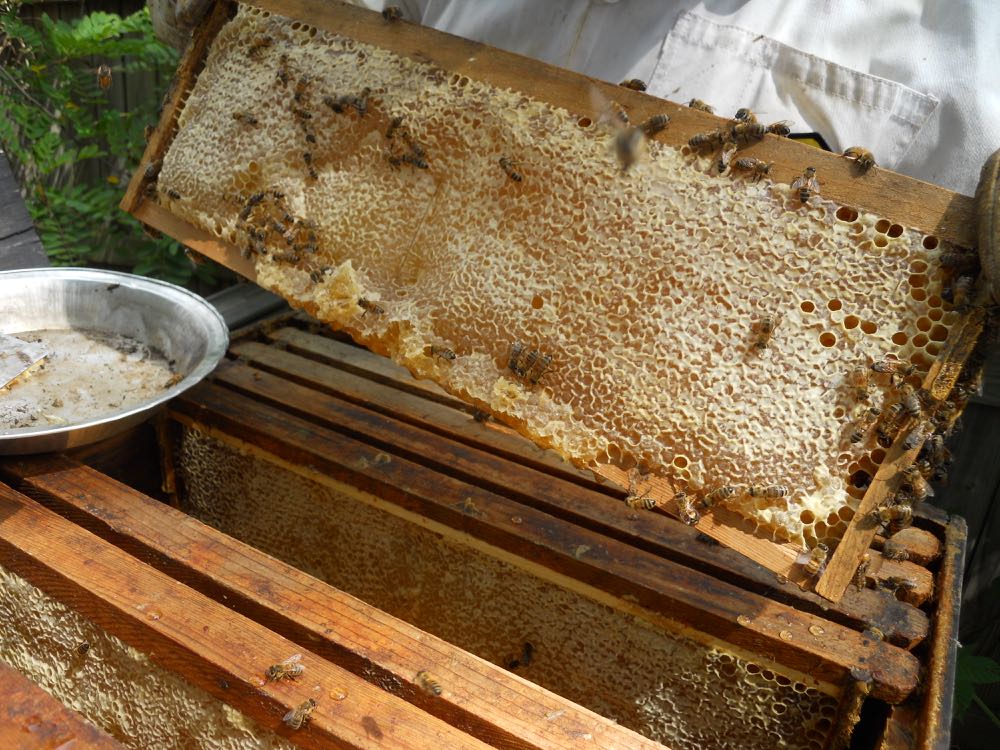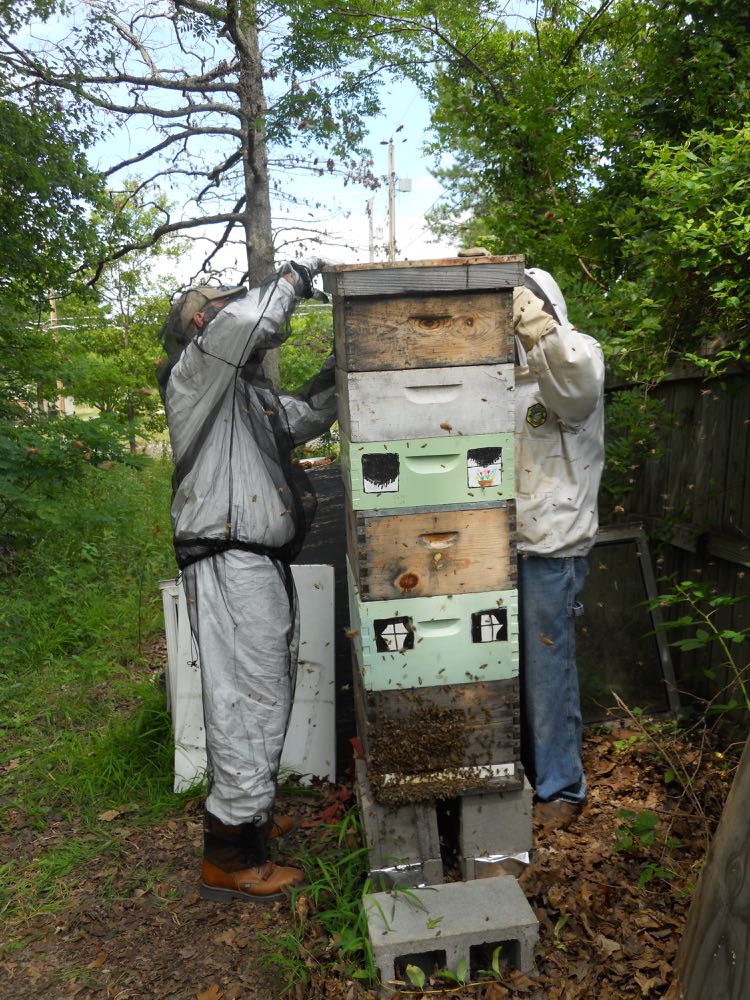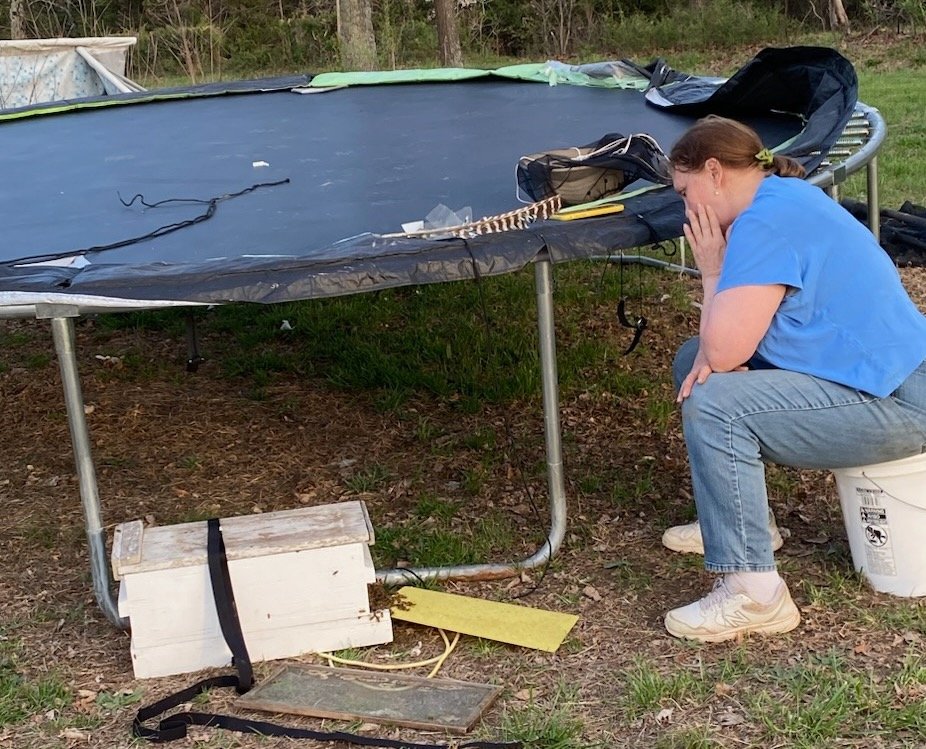Checking Bee Colony
/Meet my beekeeping friend Kelly and his one honeybee colony living in his back yard.
Kelly with his bee colony before we started the inspection. Note how high the hive is here!
Checking Kelly's Bee Colony
One of the interesting things we do as a bee club is help our regular members with their bee colonies. This particular day, we were going to inspect a bee colony that had not been checked in several weeks to add small hive beetle traps and make sure the colony had enough space.
2017 has been a very productive year, so far, for honeybees. Many of my colonies have been nectar and honey bound because we had a mild winter and a very long mild spring, which means the honeybees have had good conditions for making honey for their upcoming winter stores.
Before opening this bee colony, we borrowed some of my extra woodenware and frames; we also made sure to have enough small hive beetle traps filed with a lure in the center box and mineral oil on either side.
In the photo, Kelly S. Bracken, the beekeeper of the colony we were checking, is getting his small hive beetle jails ready.
That basket in front is my beekeeping inspection basket, it has my basic tools for conducting a hive inspection.
Kelly gets small hive beetle jails ready. Turkey feathers make a great tool for gently moving bees.
Although I tend not to use a smoker, it's good to have one ready and handy, just in case.
Tom Miller volunteered to get the smoker started and to be responsible for keeping an eye on it during the hive inspection.
The pile of kitchen towels? We use them to cover the open hive boxes, helps keep the bees calm while we inspect the frames.
Tom Miller gets the smoker started before we start the hive inspection.
Meanwhile at the hive itself, David Draker is checking around the hive to remove any items that may be unsafe for bees, and beekeepers. alike.
To the right you will see a blackberry bush I pinned to the side so that we wouldn't be caught in its thorns during the hive inspection.
David Draker checks around the hive to make sure conditions are safe for a hive inspection.
Ok, telescoping lid is off and we expect to find busy bees pulling out wax and making honey. Sure enough, the top two boxes were full of frames of honey and newly-drawn comb.
Kelly holds one of the frames from a top box where bees are pulling out new wax.
By the third box, we found baby bees. Each frame was carefully inspected to determine how well the queen is laying and whether she has enough room in the hive.
From left, Tom Miller, Kelly S. Bracken and David Draker checking a frame of brood.
Here is a closer photo of the frame of brood. So what do you see?
Close up of one of the brood frames. White substance are uncapped baby bees.
Here is another frame of brood. Anything you notice about this frame?
Another frame of brood from this box shows bee bread stored in the center.
One more frame up close, this one is clearly nectar-bound, all cells are full of nectar.
Usually the queen would lay eggs in the center spot of this brood frame now filled with nectar.
We also found drones, or male bees. The cells stick out more and look like pencil erasers.
Male bees, or drones, on a frame with bee bread and honey.
Another sign of a colony needing space, they build comb on the bottom of frames.
Drones hatch from these cells added to the bottom of a frame because the colony needs room.
As the colony boxes are put back together, additional boxes with room were added. Each box was also given two empty frames so the bees can easily expand.
Tom Miller helps David Draker lift hive boxes back on Kelly S. Bracken's now taller hive.
In the top boxes, frames full of honey, bees winter stores. Some beekeepers go ahead and harvest honey now, counting on bees being able to collect more for winter. Kelly chose to keep the honey in the top boxes.
Top boxes of hives this time of year are full of frames with capped honey.
Now that all of the boxes are back on, its time to put on the lid.
Kelly S. Bracken helps put the telescoping lid on the top of his hive.
Here is the new, taller hive with the added boxes and extra room for the bees.
Kelly S. Bracken, left, and David Draker, right, after the colony is back in their expanded hive.
Two small hive beetle traps were added to each of the boxes at a diagonal, reversing their location with each box. I didn't get a photo, it was my job to add the traps so you will just have to take my word for it.
Ok, Kelly, you and your bees should be all set for a few weeks!
Charlotte


